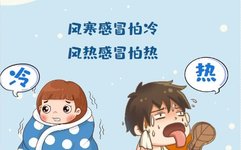Recently, after infection with the COVID-19 virus, individuals have exhibited varying symptoms due to their different constitutions. Some present with wind-cold syndrome (fenghan zheng), while others show signs of wind-heat syndrome (fengre zheng). If one cannot distinguish between wind-heat and wind-cold, choosing the wrong medication may lead to adverse effects.
How to differentiate between wind-heat and wind-cold colds?
The symptoms are mostly opposite, for example:
-
Patients with wind-heat colds typically have a high fever but do not feel cold, exhibit slight sweating, experience dry mouth and thirst, have a swollen throat, and produce thick yellow nasal discharge with a red tongue coating.
-
In contrast, patients with wind-cold colds usually have a low fever but feel very cold, do not sweat, have no thirst, experience body aches, throat pain is not prominent, and produce clear, thin nasal discharge with a thin white tongue coating.
By grasping these key points, it becomes easy to identify which type of cold one has.
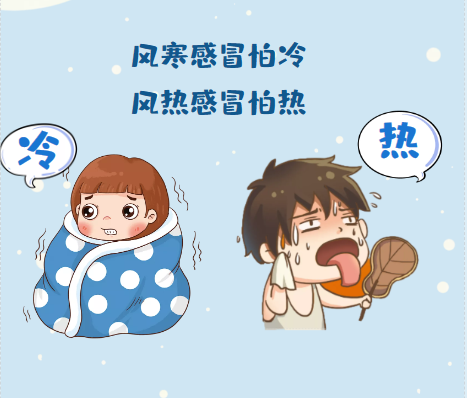
So, how should one choose and use medication for wind-cold colds?
Traditional Chinese Medicine (TCM) believes that wind-cold colds are caused by the invasion of wind-cold evil and the failure of lung qi to disperse. The treatment for wind-cold colds focuses on dispersing wind and warming the exterior (xinwen jiebiao), using ingredients such as Ma Huang (Ephedra), Jing Jie (Schizonepeta), Fang Feng (Siler), Qiang Huo (Notopterygium), Gui Zhi (Cinnamon Twig), and Su Ye (Perilla Leaf) as the main components. Below are six TCM formulas used for wind-cold colds.
1. Gan Mao Qing Re Granules
Composition: Jing Jie Sui, Bo He (Mint), Fang Feng, Chai Hu (Bupleurum), Zi Su Ye, Ge Gen (Kudzu), Jie Geng (Platycodon), Ku Xing Ren (Bitter Apricot Seed), Bai Zhi (Angelica Dahurica), Ku Di Ding, Lu Gen (Reed Rhizome).
Indications: Disperses wind and scatters cold, clears heat from the exterior. Used for wind-cold colds with symptoms of headache, fever, chills, body aches, clear nasal discharge, and dry cough.
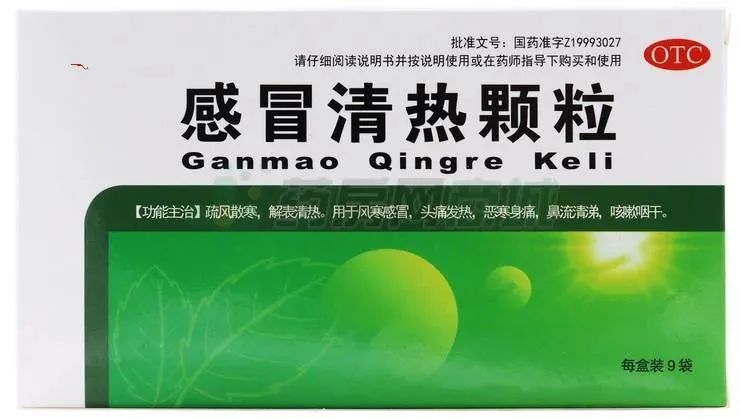
Formula Analysis: The formula includes Jing Jie Sui and Fang Feng to disperse wind and scatter cold, serving as the monarch herbs; Zi Su Ye and Bai Zhi can also disperse cold, while Chai Hu, Bo He, and Ge Gen help to release the exterior and clear hidden heat. These five herbs act as ministerial herbs to enhance the monarch’s effect of dispersing the exterior and reducing fever. Lu Gen clears heat from the lungs and stomach, Ku Di Ding clears heat and detoxifies, Jie Geng opens the lung qi, and Ku Xing Ren helps to descend qi, stop cough, and relieve wheezing. The combination of these eleven herbs achieves the effects of dispersing wind, scattering cold, and clearing heat from the exterior.
Characteristics: It can both disperse the exterior and relieve wind-cold, as well as alleviate symptoms such as fever, headache, and nasal congestion with clear discharge.
2. Jiu Wei Qiang Huo Granules
Composition: Qiang Huo, Fang Feng, Cang Zhu (Atractylodes), Xi Xin (Asarum), Chuan Xiong (Ligusticum), Bai Zhi, Huang Qin (Scutellaria), Gan Cao (Licorice), Di Huang (Rehmannia).
Indications: Disperses wind, releases the exterior, scatters cold, and eliminates dampness. Used for colds caused by external wind-cold, with symptoms of chills, fever, no sweating, heavy and painful head, and fatigue in the limbs.
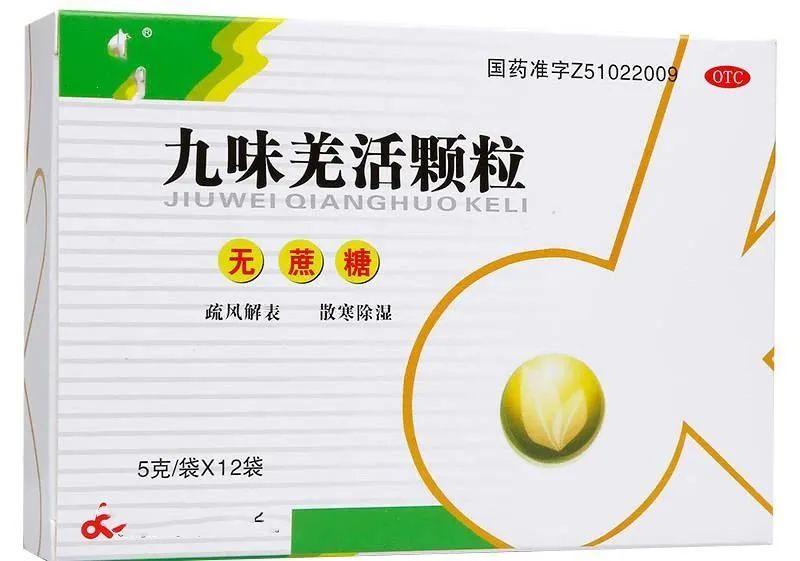
Formula Analysis: In this formula, Qiang Huo disperses wind, scatters cold, and eliminates dampness, serving as the monarch herb; Fang Feng drives away wind and eliminates dampness, while Cang Zhu is warm and eliminates dampness, both assisting Qiang Huo in inducing sweating and eliminating dampness, serving as ministerial herbs; Xi Xin scatters cold and opens the channels, Bai Zhi disperses wind and scatters cold, and Chuan Xiong scatters cold and drives away wind, all serving as assistant herbs; Gan Cao harmonizes the herbs. Together, these herbs induce sweating and eliminate dampness while also clearing internal heat.
Characteristics: It can drive away cold and clear internal heat, alleviating headache symptoms.
3. Jing Fang Granules
Composition: Jing Jie, Fang Feng, Qiang Huo, Du Huo, Chai Hu, Qian Hu, Chuan Xiong, Zhi Ke (Bitter Orange), Fu Ling (Poria), Jie Geng, Gan Cao.
Indications: Induces sweating, releases the exterior, scatters wind, and eliminates dampness. Used for wind-cold colds with symptoms of headache, body aches, chills without sweating, nasal congestion, and cough.
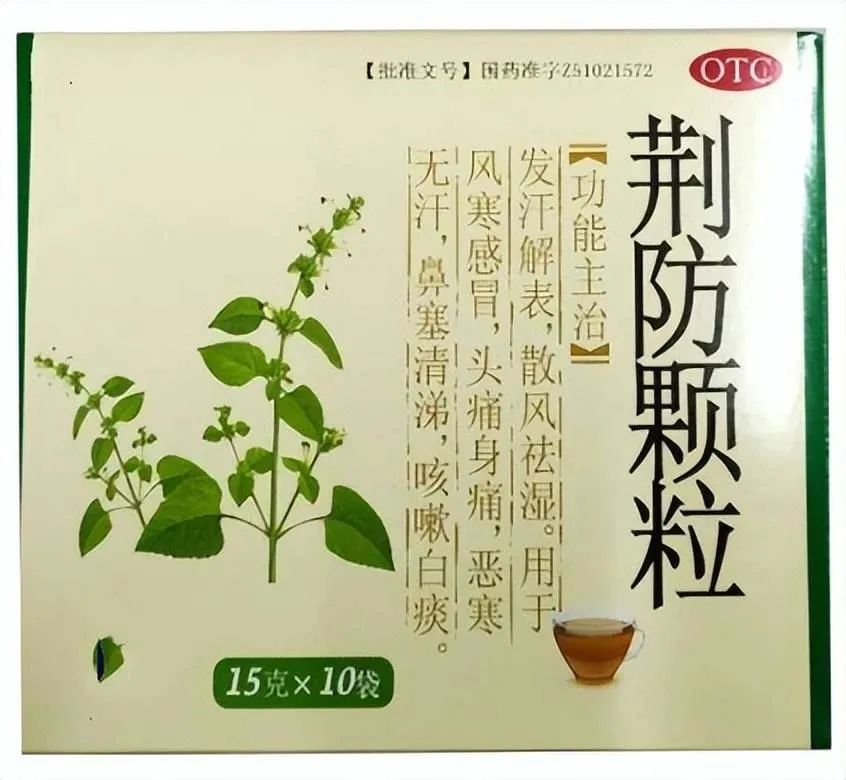
Formula Analysis: The formula includes Jing Jie and Fang Feng to disperse wind and cold, serving as the monarch herbs; Qiang Huo, Du Huo, and Chuan Xiong drive away wind and eliminate dampness; Chai Hu, Qian Hu, and Jie Geng release the exterior, open the lungs, transform phlegm, and stop cough, serving as ministerial herbs; Fu Ling strengthens the spleen and eliminates dampness, Zhi Ke opens the chest and descends qi, serving as assistant herbs; Gan Cao harmonizes the herbs. Together, these herbs achieve the effects of releasing the exterior, scattering cold, and eliminating dampness.
Characteristics: It can scatter cold and eliminate dampness, especially suitable for those with internal dampness and severe nasal congestion with clear discharge.
4. Zheng Chai Hu Drink Granules
Composition: Chai Hu, Chen Pi (Dried Tangerine Peel), Fang Feng, Gan Cao, Chi Shao (Red Peony), Sheng Jiang (Fresh Ginger).
Indications: Disperses wind-cold, relieves heat, and alleviates pain. Used for initial onset of wind-cold and influenza, mild upper respiratory infections.
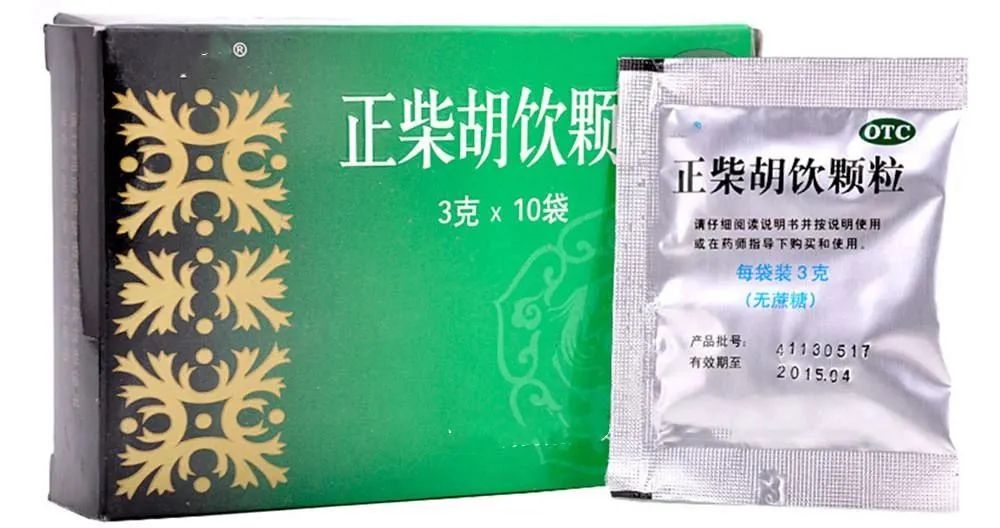
Formula Analysis: In this formula, Chai Hu disperses wind-heat as the monarch herb; Fang Feng drives away wind and eliminates dampness, and Sheng Jiang induces sweating and releases the exterior, serving as ministerial herbs; Chi Shao cools blood and clears heat, Chen Pi regulates qi and strengthens the spleen, serving as assistant herbs; Gan Cao harmonizes the herbs. Together, this formula achieves the effects of releasing the exterior, transforming phlegm, and stopping cough.
Characteristics: It can disperse cold and relieve pain, particularly effective for headaches and body aches.
5. Gui Zhi Granules
Composition: Gui Zhi, Bai Shao (White Peony), Gan Cao, Sheng Jiang, Da Zao (Jujube).
Indications: Releases the muscles and exterior, harmonizes the nutritive and defensive qi. Used for external wind invasion with symptoms of headache, fever, nasal congestion, dry heaving, and sweating with aversion to wind.
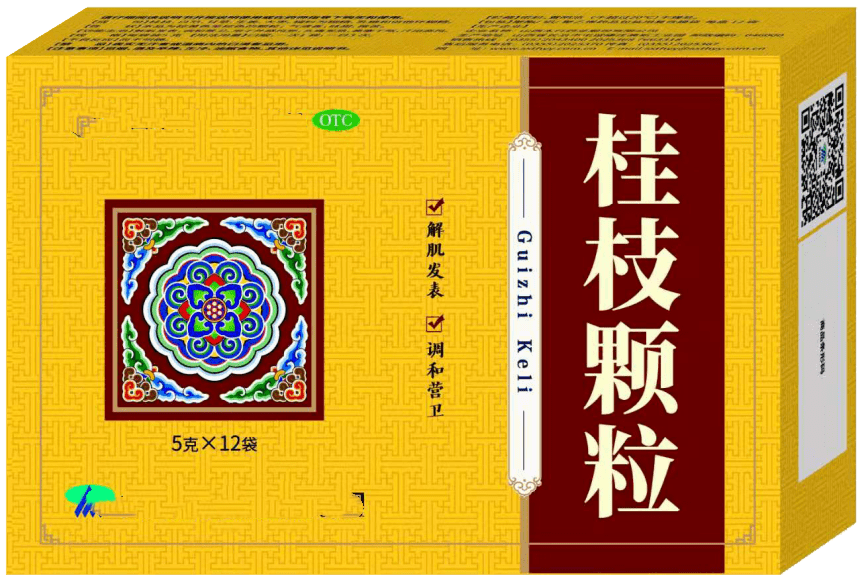
Formula Analysis: Gui Zhi is warm and disperses cold, serving as the monarch herb; Bai Shao nourishes yin and harmonizes the nutritive qi, serving as the ministerial herb; Sheng Jiang assists Gui Zhi in dispersing the exterior, while Da Zao assists Bai Shao in harmonizing the nutritive and defensive qi, serving as assistant herbs; Gan Cao harmonizes the herbs. Together, these herbs achieve the effects of releasing the muscles, dispersing cold, and harmonizing the nutritive and defensive qi.
Characteristics: It can release the exterior and scatter cold, alleviating symptoms such as headache, fever, nasal congestion, dry heaving, and sweating with aversion to wind.
6. Xiao Qing Long Granules
Composition: Ma Huang, Shao Yao (Peony), Xi Xin, Gan Jiang (Dried Ginger), Gan Cao (Licorice), Gui Zhi, Wu Wei Zi (Schisandra), Ban Xia (Pinellia).
Indications: Releases the exterior, transforms phlegm, stops cough, and relieves wheezing. Used for wind-cold with water retention, symptoms include chills, fever, no sweating, and cough with thin phlegm.
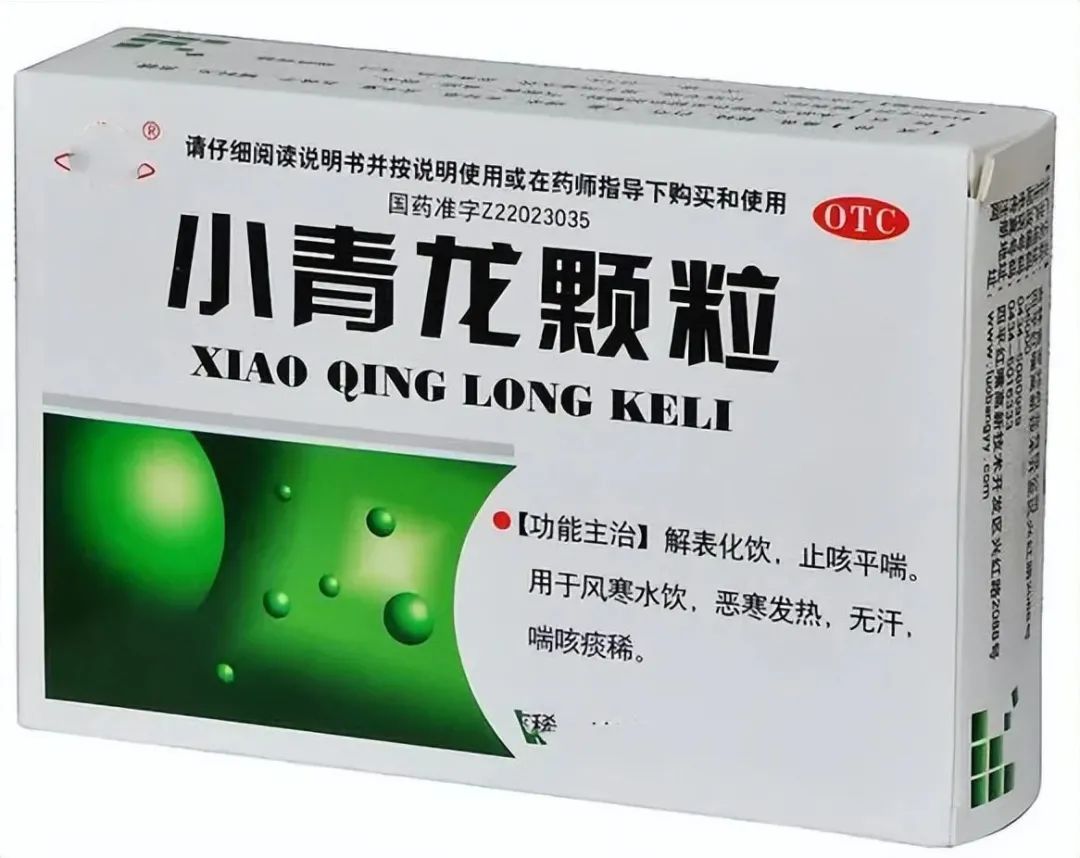
Formula Analysis: In this formula, Ma Huang and Gui Zhi induce sweating and release the exterior, serving as the monarch herbs. Gan Jiang and Xi Xin warm the lungs and transform phlegm, assisting Ma Huang and Gui Zhi in releasing the exterior, serving as ministerial herbs. Wu Wei Zi restrains qi, Bai Shao nourishes blood, preventing Xi Xin from drying and damaging fluids, while Ban Xia transforms phlegm and harmonizes the stomach, serving as assistant herbs. Gan Cao benefits qi and harmonizes the herbs. Together, these herbs achieve the effects of releasing the exterior, transforming phlegm, stopping cough, and relieving wheezing, particularly for cough and wheezing due to external cold and internal water retention.
Characteristics: It can relieve exterior cold and transform phlegm, primarily used for treating wind-cold with no sweating and cough due to internal water retention.
Warm Reminder
The above TCM formulas are all used for wind-cold colds, but their compositions differ, and their indications also vary slightly. If chills are accompanied by fever, one may choose Gan Mao Qing Re Granules, Jiu Wei Qiang Huo Granules, or Zheng Chai Hu Drink Granules; if chills occur without fever, one may choose Jing Fang Granules; if chills are accompanied by sweating, Gui Zhi Granules are recommended; if chills occur without sweating and with phlegm retention, Xiao Qing Long Granules are suitable.
There are many TCM formulas for wind-cold colds, in addition to those introduced above, including Feng Han Gan Mao Granules, Gan Mao Shu Feng Capsules, Gan Mao Soft Capsules, Wu Shi Tea and Granules, Si Ji Gan Mao Tablets, Ma Huang Zhi Sou Capsules, Wai Gan Feng Han Granules, Xiao Er Zhi Bao Pills, and so on.
Source: Yixian Pharmacy

